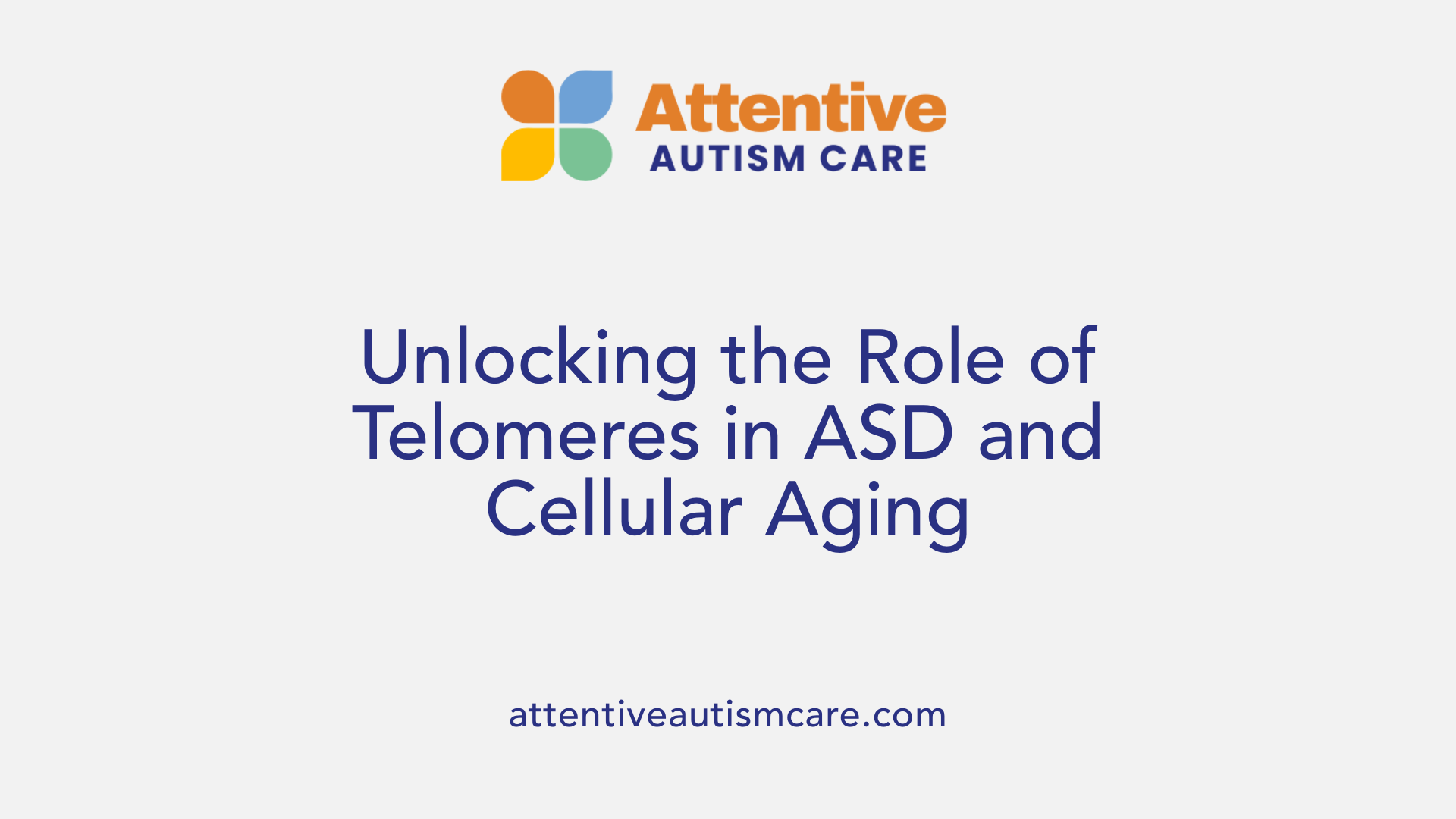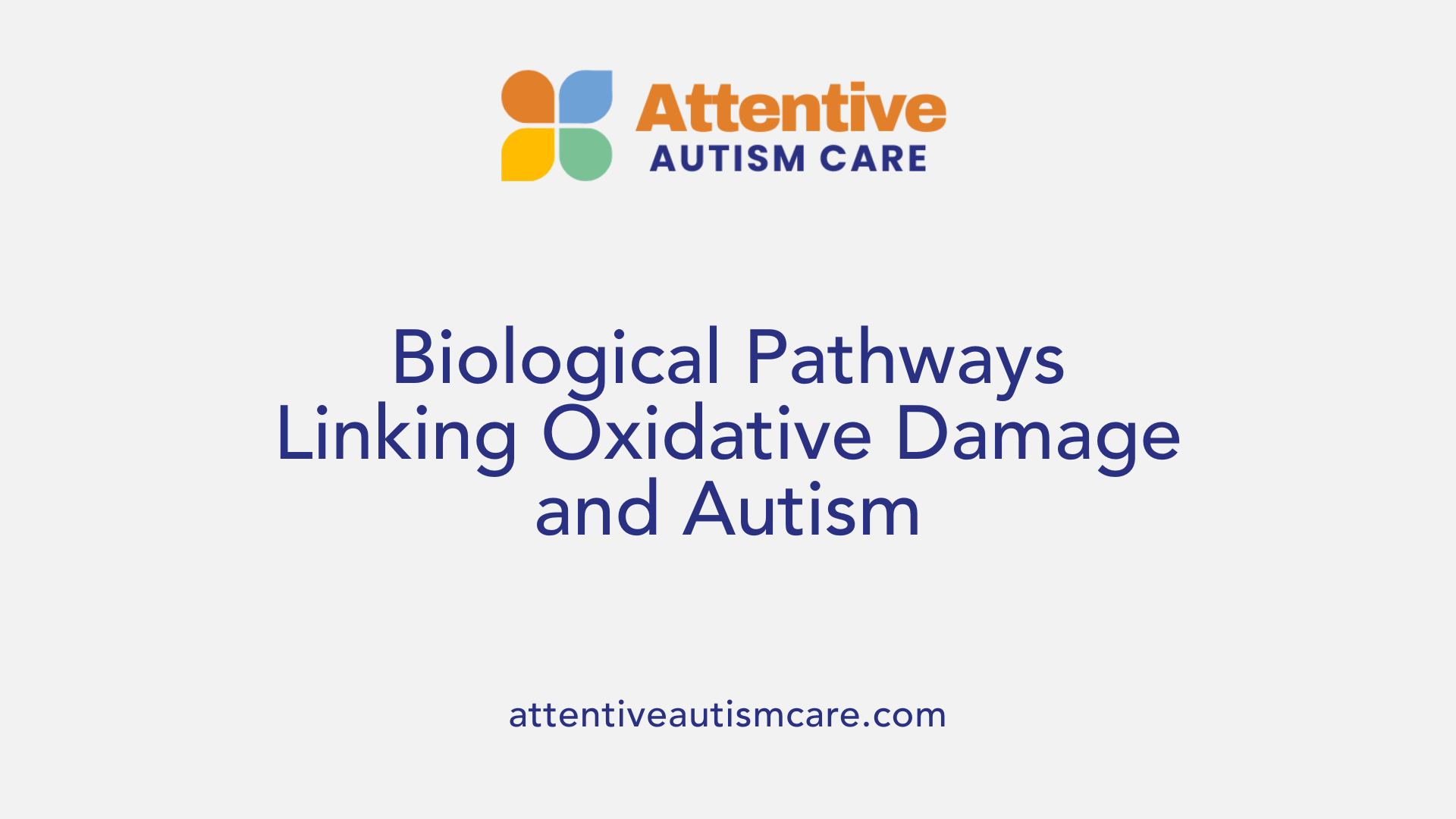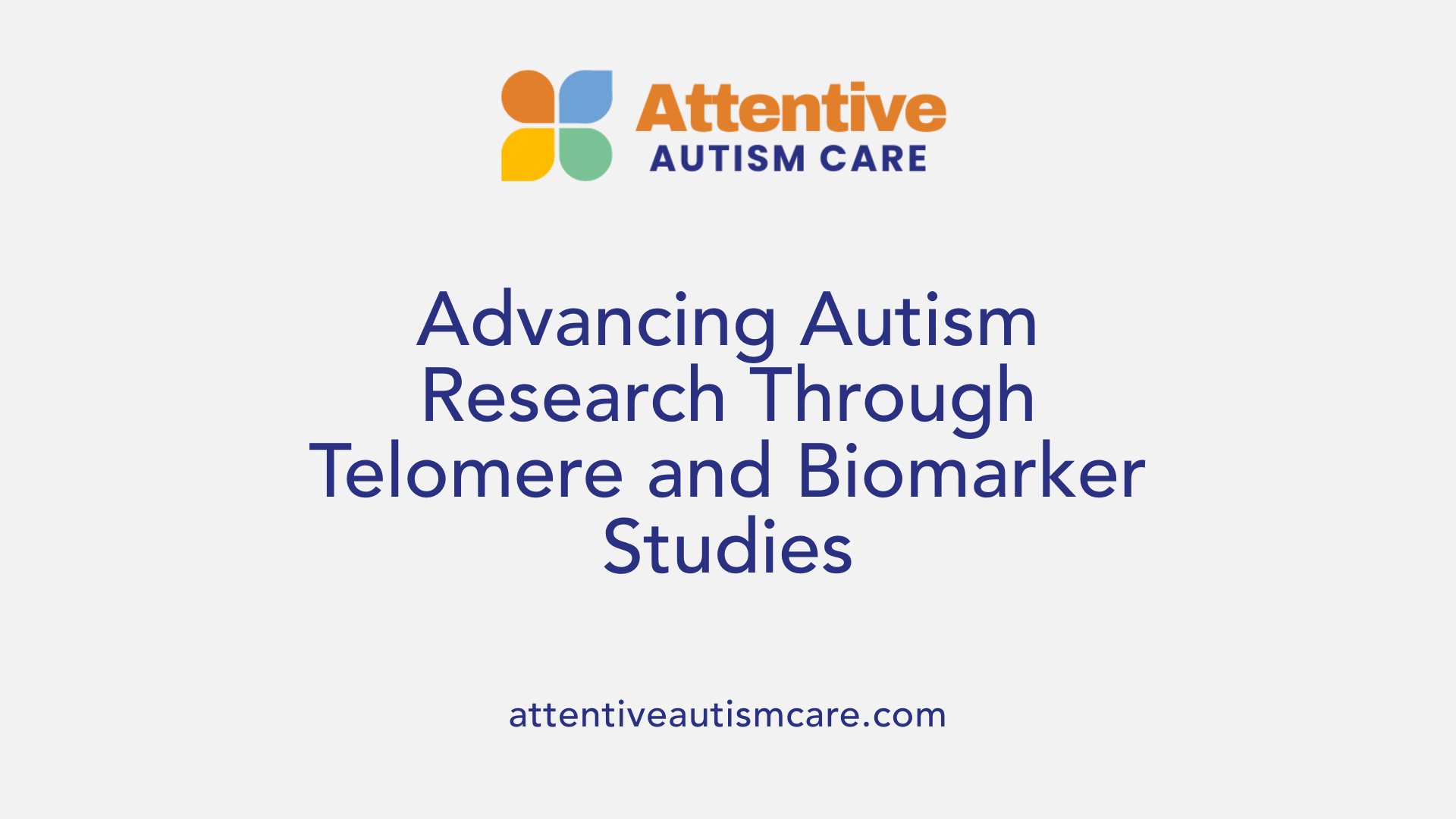Telomere And Autism
Unraveling the Biological Nexus Between Telomeres and Autism

Introduction to Telomere Biology and Autism Spectrum Disorder
Recent scientific investigations reveal compelling links between telomere length, oxidative stress, and autism spectrum disorder (ASD). Understanding this biological relationship offers promising avenues for early diagnosis, potential biomarkers, and insights into the underlying mechanisms of ASD. This comprehensive review delves into how telomeres, the protective caps on our chromosomes, are implicated in autism through a complex interplay of genetic, epigenetic, and environmental factors.
The Significance of Telomeres in Cellular Aging and Genomic Stability

What is the role of telomeres in autism spectrum disorder (ASD)?
Telomeres are protective DNA sequences located at the ends of chromosomes, serving to safeguard genetic information during cell division. In individuals with ASD, studies have consistently found that telomeres tend to be shorter compared to typically developing children. This shortening is thought to reflect increased cellular aging, DNA damage, and genomic instability, all of which could contribute to neurodevelopmental issues seen in ASD.
Family research also shows that unaffected siblings and parents of children with ASD have telomere lengths that fall between those of ASD children and typically developing individuals. This observation hints at genetic and environmental factors influencing telomere dynamics. Moreover, sex-specific differences are evident, with autistic males exhibiting more significant telomere shortening and higher levels of telomeric damage than females. This might relate to the higher prevalence of ASD among males.
Ultimately, telomere biology appears to be intricately linked to ASD, with ongoing research trying to determine whether telomere shortening acts as a cause or a biomarker of the disorder. The findings suggest that telomeres could serve as a biological indicator of ASD risk, possibly reflecting the cumulative impact of oxidative stress and inflammation.
How do telomere length and oxidative stress relate to autism spectrum disorder?
Children and adolescents with ASD show signs of increased oxidative stress, which is characterized by the imbalance between free radicals and antioxidants in the body. Elevated markers of oxidative DNA damage, such as 8-hydroxy-2-deoxyguanosine (8-OHdG), and markers of lipid and protein damage, including 3-nitrotyrosine (3-NT) and dityrosine (DT), have been reported.
This oxidative environment can damage telomeres, which are rich in guanine—an element particularly vulnerable to oxidative modification. As a result, children with ASD often have shorter telomeres, especially in basic blood cells called leukocytes. Such damage is associated with increased levels of oxidative lesions in telomeres, suggesting that oxidative stress may accelerate telomere attrition.
Further evidence points to the relationship between mitochondrial dysfunction and ASD. Higher mitochondrial DNA copy numbers have been observed in ASD, indicating that mitochondrial stress might be contributing to oxidative damage. The link between shorter telomeres and oxidative stress emphasizes a cycle where oxidative damage accelerates telomere shortening, possibly exacerbating neurodevelopmental disruptions.
While the causal direction remains to be fully clarified, the strong association supports the idea that oxidative stress impacts cellular integrity in ASD, with telomere shortening serving as both a marker and a consequence of this damage.
Summarized Insights on Telomeres and Autism
| Aspect | Findings | Implications |
|---|---|---|
| Telomere length in children | Shorter in ASD children compared to TD children | Potential biomarker for early ASD detection |
| Unaffected family members | Siblings and parents show intermediate telomere length | Genetic and environmental influence on telomeres |
| Sex differences | Males with ASD have more significant shortening | Could explain sex bias in ASD prevalence |
| Oxidative stress markers | Elevated 8-OHdG, 3-NT, and D-T; reduced antioxidants | Support for oxidative damage role in ASD |
| Mitochondrial function | Increased mitochondrial DNA copy number | Mitochondrial stress linked to oxidative damage |
| Diagnostic potential | Telomere length and LINE-1 methylation as biomarkers | Moderate accuracy, valuable for early diagnosis |
How the findings extend our understanding
Research using advanced techniques such as Mendelian randomization analysis has suggested that ASD may directly cause telomere shortening, rather than shorter telomeres increasing ASD risk. This distinction is crucial because it points toward cellular stress and inflammation associated with ASD as possible drivers of telomere attrition.
Family-based studies further reveal that families affected by ASD often have shortened telomeres even before clinical diagnosis, emphasizing the potential of telomere length as an early warning sign. Furthermore, interventions like family training have shown to lengthen telomeres in children with ASD, hinting at the beneficial effects of psychosocial support on cellular health.
In conclusion, telomeres serve as a window into the cellular and molecular landscape of autism. Their shortening correlates strongly with oxidative stress, inflammation, and neurodevelopmental challenges, positioning them as both a biomarker and a potential target for future therapeutic strategies.
Telomere Dynamics in Autism Spectrum Disorder Families

Are telomere length differences observed in families with autism, and what could this indicate?
Research shows that families with a child diagnosed with autism spectrum disorder (ASD) tend to have shorter telomeres compared to families without ASD. This pattern is not exclusive to the children with ASD; unaffected siblings, infants, and mothers in high-risk (HRA) families also demonstrate decreased telomere length. These findings suggest that telomere attrition might be influenced by both genetic factors and shared environmental conditions within families.
Shorter telomeres in these families may represent an inherited or environmentally mediated biological stress marker. Since telomere length is associated with cellular aging and oxidative stress, its reduction could reflect increased biological challenges faced by these families. Moreover, shorter telomeres have been linked to neuropsychiatric conditions, making them potential biomarkers for ASD susceptibility or severity.
In terms of broader implications, these differences highlight the importance of considering cellular aging processes in understanding ASD. The familial pattern of telomere shortening points toward possible genetic predispositions that affect telomere maintenance or heightened biological stress due to shared environmental exposures.
Overall, the observed telomere length variations underscore a potential link between cellular aging and neurodevelopmental disorders like ASD, possibly providing avenues for early diagnosis or intervention strategies.
Oxidative Stress and Telomere Damage in Autism

How do telomere length and oxidative stress relate to autism spectrum disorder?
Research consistently shows that individuals with autism spectrum disorder (ASD), particularly children and adolescents, tend to have shorter telomere lengths. Telomeres, repetitive DNA sequences at chromosome ends, protect genetic data during cell division. Shorter telomeres are often associated with cellular aging, stress, and inflammation.
In those with ASD, telomere shortening appears more prominent in males, hinting at possible sex-specific vulnerability or differences in aging processes. Alongside telomere attrition, markers of oxidative stress are elevated in ASD populations. These include higher levels of 8-hydroxy-2-deoxyguanosine (8-OHdG), a marker of oxidative DNA damage; lipid peroxidation products like HEL; and increased levels of oxidative modifications of proteins such as 3-nitrotyrosine (3-NT) and malondialdehyde (DT).
Conversely, antioxidant defenses are reduced, evidenced by lowered total antioxidant capacity (TAC) and diminished activity of enzymes like catalase (CAT). Moreover, mitochondrial DNA copy number—a reflection of mitochondrial activity—tends to be increased, correlating with ASD risk.
These findings suggest a cycle where oxidative stress accelerates telomere shortening, potentially damaging neural development and contributing to ASD pathology. Although direct causality remains to be clarified, the correlation indicates that oxidative stress plays a prominent role in the biological mechanisms underlying ASD.
What evidence links telomeric oxidative damage to autism?
Autistic children exhibit elevated levels of oxidative lesions specifically at telomeric DNA sequences compared to healthy controls and unaffected siblings. The high guanine content in telomeres makes them especially vulnerable to attack by reactive oxygen species (ROS), leading to oxidative base modifications.
Measurements utilizing quantitative PCR techniques have confirmed increased telomeric oxidation in ASD individuals. Interestingly, while autistic females tend to maintain longer telomeres overall, they still demonstrate higher levels of oxidative damage than males. This suggests sex-specific differences in vulnerability or repair capacity.
The presence of oxidized bases at telomeres signifies ongoing oxidative assault, which may impair telomere function and stability. Damage accumulation can hinder proper chromosome end maintenance, provoke genomic instability, and potentially disrupt neural systems involved in cognition and behavior.
Overall, these findings reinforce the concept that oxidative damage at telomeres is a hallmark of ASD. It highlights a possible pathway where oxidative stress directly damages chromosome ends, influencing neurodevelopmental processes and contributing to the disorder’s manifestation.
Molecular Mechanisms Connecting Telomere Shortening and Autism

What biological mechanisms could underlie the connection between telomeres and autism?
The link between telomeres and autism involves complex biological processes, primarily driven by oxidative stress. Oxidative stress results from an imbalance between reactive oxygen species (ROS) and antioxidant defenses, leading to damage such as oxidative lesions in DNA. In children with ASD, elevated levels of oxidative DNA damage markers like 8-hydroxy-2-deoxyguanosine (8-OHdG) and altered activities of antioxidant enzymes such as catalase and superoxide dismutase (SOD) have been observed. These changes suggest increased oxidative stress, which accelerates telomere shortening because telomeres are rich in guanine bases that are particularly vulnerable to oxidative damage.
This oxidative damage may compromise telomere integrity, impacting cellular aging and genomic stability. Shortened telomeres serve as markers of biological aging and have been associated with increased susceptibility to neurodevelopmental issues like autism. Furthermore, stress-related mechanisms involving hormones such as cortisol and regulatory proteins like klotho, which influence oxidative stress and aging, have been linked to telomere length in both children with ASD and their caregivers. The cumulative effect of oxidative stress and related cellular damage could influence neural development and function, contributing to the symptomatology of autism.
How do genetic and epigenetic factors influence telomere dynamics in ASD?
Genetic and epigenetic regulation significantly shape telomere length and stability, thus impacting autism. Research has indicated that autistic individuals often exhibit decreased relative telomere length (RTL) alongside reduced methylation of LINE-1 retrotransposons, which are markers of global DNA methylation and chromosomal stability. These epigenetic modifications may reflect broader chromatin alterations associated with neurodevelopmental disorders.
In addition, structural variations in chromosomes and mutations on genes implicated in neurodevelopment can influence telomere maintenance. For example, variations in genes responsible for telomere elongation or protection, such as those encoding components of the shelterin complex, may predispose to shorter telomeres.
The expression of TERRA (telomeric repeat-containing RNA), a non-coding RNA transcribed from telomeres involved in telomere maintenance and heterochromatin formation, also varies in autism. Studies show that autistic males possess lower TERRA expression from specific chromosomes and increased telomeric oxidation, indicating disrupted telomere regulation at the epigenetic and transcriptomic levels. These factors collectively alter telomere dynamics and influence neurodevelopment, underscoring the intricate genetic and epigenetic interactions in ASD.
Impact of stress-related pathways and hormones
Stress-response pathways significantly affect telomere biology, especially in the context of autism, where stress levels are often elevated. Chronic stress activates the hypothalamic-pituitary-adrenal (HPA) axis, increasing cortisol levels, which can promote oxidative stress and lead to accelerated telomere shortening.
Higher stress levels in families of children with ASD, especially in caregivers, correlate with shorter telomere length, suggesting that stress-related hormones and inflammatory pathways modulate telomere integrity. Additionally, klotho, a protein associated with enhanced resistance to oxidative stress and slower aging, has been linked to telomere length in high-stress caregiving environments.
Furthermore, neural pathways affected in ASD, involving inflammatory cytokines and stress hormones, might influence telomere stability. Persistent activation of stress pathways can lead to increased DNA damage, including at telomeres, thus potentially heightening risk for neurodevelopmental disturbances. Overall, these stress-related biological mechanisms may underpin the observed telomere shortening in ASD, linking environmental factors with molecular changes in neural tissues.
Therapeutic and Diagnostic Implications of Telomere Research in ASD
What potential biomarkers involving telomeres could aid in autism diagnosis?
Recent studies highlight the significance of telomere length as a potential biomarker for autism spectrum disorder (ASD). Specifically, relative telomere length (RTL) in peripheral blood leukocytes has been consistently found to be shorter in children with ASD compared to their typically developing peers. This shorter RTL is linked to increased odds of having autism, with some research indicating an adjusted odds ratio of approximately 2.15, suggesting a moderate but notable association.
In addition to telomere length, markers of oxidative damage within telomeric regions, such as elevated levels of 8-hydroxy-2-deoxyguanosine (8-OHdG), have been observed in children with ASD. Elevated 8-OHdG indicates higher oxidative stress and DNA damage at telomeres, which correlates with the pathology. The methylation status of LINE-1 elements, which are related to genomic stability, also shows decreased levels in autistic individuals, further supporting their role as potential biomarkers.
These molecular indicators can be accurately measured through quantitative PCR (qPCR) techniques and other molecular diagnostic tools. Their non-invasive nature, especially when assessed in peripheral blood samples, makes them practical candidates for early screening, especially in high-risk populations such as siblings of children with ASD. Employing such biomarkers could enhance early diagnosis and enable timely intervention.
| Biomarker Type | Measurement Method | Diagnostic Value | Additional Notes |
|---|---|---|---|
| Relative Telomere Length (RTL) | qPCR | Moderate sensitivity and specificity | Shorter in children with ASD |
| Telomeric Oxidative Damage (8-OHdG) | ELISA, qPCR | Indicates oxidative stress levels | Elevated in ASD children |
| LINE-1 Methylation | Methylation-specific PCR | Modulates genomic stability | Decreased in neurodevelopmental disorder cases |
What are the prospects for therapies targeting telomere maintenance or oxidative stress in ASD?
Given the observed association between shorter telomeres, increased oxidative stress, and ASD, there is growing interest in developing targeted therapies. One promising avenue involves antioxidants that can mitigate oxidative damage at telomeric and genomic levels.
Compounds that enhance antioxidant enzyme activity, such as catalase, have been shown to reduce oxidative DNA lesions. By decreasing oxidative stress, these treatments may slow telomere shortening and reduce neural damage.
Furthermore, behavioral interventions, including family training, have been associated with longer telomere lengths in affected children. Such interventions might influence cellular aging processes by reducing stress levels and improving environmental factors.
Future therapeutic strategies could focus on personalized approaches that combine pharmacological agents aimed at oxidative stress reduction with behavioral therapies that foster neurodevelopmental resilience. Research into molecules that specifically promote telomerase activity or stabilize telomeres could also emerge as groundbreaking treatments.
| Intervention Type | Target Focus | Potential Outcomes | Current Status |
|---|---|---|---|
| Antioxidants | Oxidative stress reduction | Preservation of telomere length, improved neurodevelopment | In clinical trial phases for various neuroconditions |
| Behavioral therapy | Environmental stress mitigation | Longer telomeres, better cognitive and social functions | Widely accessible and effective in early stages |
| Telomere-stabilizing agents | Telomerase activation | Telomere elongation, potentially slowing neurodegeneration | In experimental development |
Future research directions
The relationship between telomeres and ASD opens numerous avenues for further investigation. It is essential to explore whether telomere length changes are a cause or consequence of neurodevelopmental alterations in ASD.
Longitudinal studies tracking telomere dynamics from infancy through childhood can provide insights into the progression of cellular aging and its link to behavioral symptoms.
Moreover, integrating telomere biology with other molecular and neuroimaging data could elucidate mechanisms underlying ASD.
Developing refined biomarkers that combine telomere metrics with neurochemical and genetic profiles could lead to more accurate diagnosis and tailored treatments.
Lastly, understanding environmental and lifestyle factors that influence telomere health—such as stress, diet, and physical activity—could inform preventive strategies and public health policies aimed at reducing ASD incidence and severity.
By advancing this multidisciplinary research, clinicians and scientists aim to improve early detection, develop effective interventions, and unravel the complex biological underpinnings of autism spectrum disorder.
Sex Differences and Implications for Autism Research
What are the differences observed in telomere length and oxidative damage between males and females with autism?
Research indicates that telomere biology varies between males and females affected by autism spectrum disorder (ASD). Males with autism generally exhibit significantly shorter telomeres in peripheral blood leukocytes compared to healthy controls and females with autism. This shortening is associated with increased oxidative damage to telomeric regions, marked by higher levels of oxidized bases such as 8-hydroxy-2-deoxyguanosine (8-OHdG).
Interestingly, despite females with autism having longer telomeres overall, they display even higher levels of telomeric oxidation than their male counterparts. This paradox suggests that, although females might not show as pronounced telomere shortening as males, they endure greater oxidative stress at the telomeres. The elevated oxidative damage in autistic females could contribute to different biological pathways involved in ASD and might influence the clinical presentation.
How sex-related factors influence autism prevalence and biology
The observed sex differences in telomere length and damage are thought to partly explain why autism is more prevalent in males. Shorter telomeres and higher oxidative stress in males may increase vulnerability to neurodevelopmental disruptions characteristic of ASD. Conversely, the higher oxidative damage in females, despite longer telomeres, indicates that oxidative stress plays a complex role that differs by sex.
Hormonal differences, such as estrogen’s antioxidant properties, might confer some protection to females, impacting telomere maintenance and oxidative responses. These biological variations highlight the importance of considering sex as a biological variable in autism research. They also open avenues for exploring sex-specific biomarkers that can enhance early diagnosis and personalized interventions.
Sex-specific biomarkers and interventions
Identifying biomarkers that differ between sexes can improve diagnostic accuracy and inform personalized treatment strategies. For instance, measuring telomere length and oxidative damage levels could aid in identifying individuals at higher risk for ASD, especially when considering sex-specific thresholds.
Potential interventions might include antioxidant therapies tailored to mitigate telomeric oxidative damage, particularly in males who show more pronounced telomere shortening. In females, strategies could focus on reducing oxidative stress to prevent telomeric oxidation despite longer telomeres.
Overall, acknowledging these sex differences enhances our understanding of ASD’s biological underpinnings and supports the development of targeted, sex-specific prevention and treatment approaches.
| Aspect | Males with Autism | Females with Autism | Biological Implications |
|---|---|---|---|
| Telomere Length | Shorter | Longer | Influences vulnerability to ASD and neurodevelopmental disruptions |
| Telomeric Oxidative Damage | Higher | Higher | Comparable or greater damage despite longer telomeres, indicating vulnerability |
| Oxidative Stress Markers | Elevated | Elevated | Linked to neuroinflammation and ASD pathologies |
| Prevalence in ASD | Higher | Lower | May relate to telomere biology differences |
| Diagnostic Considerations | Short telomeres, high damage | Longer telomeres, high damage | Sex-specific biomarkers and interventions |
Understanding these sex-related differences in telomere biology is crucial for advancing ASD research. It underscores the need to develop sex-specific diagnostic tools and personalized therapies that address the unique biological profiles of males and females affected by autism.
Future Directions and Challenges in Telomere-Autism Research

Are there any ongoing or future research directions involving telomeres and autism?
Recent studies have reinforced the association between shortened telomeres and autism spectrum disorder (ASD). Building on these findings, scientists are now focusing on longitudinal studies that track telomere dynamics over time in individuals at risk for ASD. These studies aim to clarify whether telomere shortening precedes or results from the development of ASD symptoms, helping to establish causal relationships.
An important future direction involves integrating multiple data types through multi-omics approaches. By combining genetic, epigenetic, and environmental information, researchers hope to identify detailed pathways that influence telomere biology and ASD. This comprehensive understanding could uncover new biological markers and highlight potential targets for intervention.
Furthermore, efforts are underway to develop personalized treatment strategies. For example, therapies aimed at reducing oxidative stress and promoting telomere maintenance are being explored as potential methods to mitigate ASD severity or prevent its onset. Such approaches would tailor interventions based on individual biological profiles.
The potential to use telomere length and related biomarkers as early diagnostic tools is also gaining interest. These biomarkers could improve early detection, enabling timely interventions that could improve outcomes for children with ASD.
However, significant challenges remain. Standardizing measurement techniques for telomere length and oxidative damage is critical for consistency across studies. Establishing causality clearly remains difficult, given the complex interplay of genetics, environment, and biological aging. Despite these hurdles, ongoing research endeavors are poised to deepen our understanding of telomere-related mechanisms in autism, paving the way for more effective and personalized treatments.
Summary and Future Perspectives on Telomeres and Autism
Current evidence underscores a significant association between telomere shortening, oxidative stress, and autism spectrum disorder. Telomeres serve as sensitive indicators of cellular aging, genomic stability, and biological stress, all of which are altered in ASD. The potential for telomere length and associated oxidative damage markers to serve as early diagnostic tools or therapeutic targets is promising but requires further validation through longitudinal and mechanistic studies. Understanding sex-specific differences and familial patterns enhances our grasp of the complex etiology behind autism. As research progresses, integrating telomere biology into clinical practice could revolutionize early diagnosis and individualized treatment strategies, marking a new era in autism research and care.
References
- Telomere Length and Autism Spectrum Disorder Within the Family
- Causality between Autism Spectrum Disorder and Telomere Length
- Shorter telomere length in children with autism spectrum disorder is ...
- Association of Relative Telomere Length and LINE-1 Methylation ...
- Shorter telomere length in peripheral blood leukocytes is associated ...
- Differential Levels of Telomeric Oxidized Bases and TERRA ...
- Shortened Telomeres in Families With a Propensity to Autism
- Telomere Length and Autism Spectrum Disorder Within the Family ...




































































































